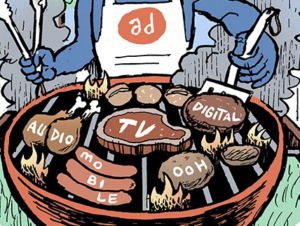 “On TV And Video” is a column exploring opportunities and challenges in advanced TV and video.
“On TV And Video” is a column exploring opportunities and challenges in advanced TV and video.
Today’s column is written by Ed Shannon, chief revenue officer at SpringServe.
The “I won the lottery” element of display header bidding is not the same with video.
As others have noted, there is no actual header in video, making the tech even more of a hack, which hurts customer experience on a publisher’s most important content asset. Video inventory is a scarce and valuable product to be held close to the vest, some have warned, and video header bidding latency and data leakage may occur.
Despite these risks, publishers eagerly ask me about it all the time. But aside from latency and data leakage, there are a few different, but equally important, arguments why video header bidding is more myth than truth.
Fill Rates Are Big Trouble For Publishers
Publishers gain advantage with display header bidding, which pits bidders against each other in a more direct manner. But this is where video header bidding doesn’t come through.
With the current VPAID technology, buyers have an unbelievable advantage from the data they can collect before the bid, and they get even more data right after they bid. They can use this data to pull back and not show any ad at all without paying the publisher for that lost impression. With this tactic, often called “opportunity abandonment,” there is no money changing hands. Advertisers only pay for ads shown.
Fill rates are often 50% at best as a result of opportunity abandonment. This means that publishers contend with unsold inventory for their most valuable content. What’s more, it takes away publisher control. Rather than creating a package of inventory to sell to a buyer, buyers can cherry-pick inventory with no ability for the seller to know how or why, leaving them unable to negotiate or optimize.
Publishers Gain More Control With Deal ID
An intermediary that offers a video header bidding solution may be more focused on increasing the amount of video it can offer to its demand partners, rather than purely increasing demand for publishers. This conflict may place a publisher’s most valuable content assets in the hands of partners who are less concerned with quality and control.
Sellers using video header bidding can’t tell if there is bias toward certain demand sources based on internal needs to please media buyer clients. This can hurt buyers and sellers alike, who are not able to interact with one another, which may benefit each other less than if they were working together directly.
Deal ID solves this problem, ensuring that buyers can automatically target audiences on video content while publishers preserve data, latency and the advertiser relationship. And for publishers that want to rely less on direct sales, it can act as a scalable, automated channel that is still safe and profitable.
Video Quality Control
Like on other programmatic channels, video header bidding opens the door for foul play above and beyond spoofing and data leakage that can occur on display. And since the audience consuming video content may be composed of the most engaged people on the site, the data is even more valuable.
Fraudsters can spoof good sites if a publisher puts its name on the list of five, 10 or 20 different intermediary header bidding “partner lists,” or even if they don’t. Only a publisher can police spoofers, as the Financial Times recently did. It’s important to be clear with partners about where inventory can go and perform regular checks across the industry.
Video fraud is already twice as prevalent as display fraud [PDF]. A lot of programmatic display has become a joke, hurting good publishers, and video will go the same way unless publishers start protecting themselves from having their customer base and data compromised and their inventory value diluted. Publishers should be wary of the potential pitfalls associated with video header bidding and be prepared to guard the quality of their inventory on all programmatic channels.
Follow SpringServe (@springserve) and AdExchanger (@adexchanger) on Twitter.
Editor’s note: This is a modified version of a column that first appeared in Wednesday’s On TV & Video newsletter.












